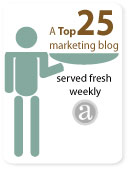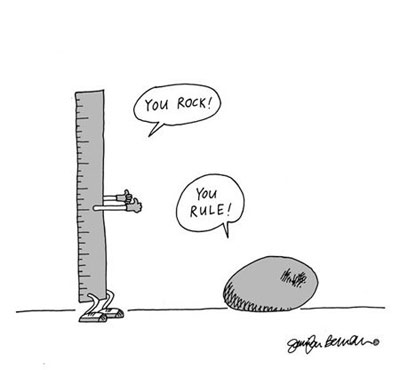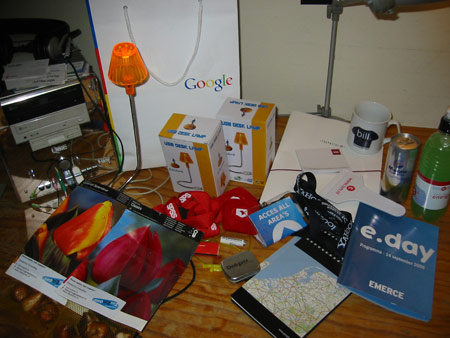David Fleck, VP Marketing from Linden Lab talked about Second Life.
He Started with a slide from Amsterdam in Second Life, the Amsterdam simulator is very popular in the online game, due to the 16.000 members from The Netherlands who’ve joined.
What Second Life is and how to use it in your own business:
The goal was to create a place where people could come to in interact. Users are building communities and coming together.
Big investors have backed up Second Life, because potentially it was going to be a shooting star, and it has proven to be so.
Second Life is built on three big stones:
1. Community – interact, socialize and network
2. User created content – users can create buildings, goods, services
3. Market place – Monetize, buy and sell goods
Second Life doesn’t want to be compared to other MMO services, because when joining you decide what you want to do by yourself, there’s no ‘parcour’ to run through. You don’t have to sell stuff, go through levels to achieve something. It’s a free world.
At this time, the world of Second Life is 20.000 hectares in size which is actually the size of the city of Boston. This territory is worth 15 terabytes in data, which Fleck suspects to be somewhere around 2400 DVDs of data, should it be turned into a standalone desktop game. Plus: keeping up isn’t possible. It’s constantly evolving. DVDs would be outdated the moment they are released.
Tipping point was late last year when Linden Lab realized how big in size and how massive all the content was. Conversations at the Linden Lab: “have you seen this or that?” others would reply: “no, when was it created, I’ve never seen it.”
Making money in Second Life is possible. The amount of money that travels hand to hand is about 6.4 million dollars a month. Fleck expects that 75 million dollars worth of goods and services will have been traded by the end of this year. There’s an internal trade organisation called Lindex where users can exchange Linden Dollars for real dollars and vice versa.
48% of the registrations in Second Life is outside the US. Fleck expects 1.000.000 users before the end of this year.
Emerce article about Second Life caused a huge growth in Holland thanks to visibility and awareness. The average growth rate in Holland is 60% per month. That’s huge.
The business model isn’t about creating content. Users create, Linden Labs delivers hardware and everyone is invited to participate in the created content, that’s how it works. The art of creation in Second Life is unfortunately limited to the ‘technically skilled’ people. Designers should understand how to create 3D models, work with patterns etc. People can learn how to do it, but mostly it’s the same people who create. Most new users only want to use what’s there. The stronger the design skills/programming skills, the more advanced the outcome would be.
Different content is being created, some is really good, some is really bad. Who decides what can stay? Linden Labs doesn’t interfere. Users are free and are being left alone. Other users can suggest changes, but nobody has the rights to remove content, except for the creator. That’s why some content looks awesome, and other content looks more average.
Cases:
Duran Duran enters Second Life, creates an island to perform ‘live’ in this digital world. Other bands are to be announced by major labels.
Real example: an artist rents space in club in Second Life (hires the stage for a night), then he streams music from his room at home in the real world to the bar in Second Life, he entertains people, promotes his music and interacts with ‘virtual listeners’ who are in that club at the time. They can buy the music on CD, which the artist can ship in real life.
Harvard will be teaching classes in second life // many other colleges are there as well. [CyberOne is the first Harvard course to be offered in a virtual world and the first course open to the public.] – [read more]
Brands: American Apparel opens store, designs it after a real store in Tokyo. [more info here]
How they uses POS tactics: users come in store, buy pair of jeans in Second Life, get voucher with 15% off to buy pair of jeans in real store.
Yahoo, simulcast a conference in Second Life, ‘mirrors real life’ conference on the web so that other people can attend it too – be it through their digital alter-egos. [example of simulcast]
American Cancer Foundation – Relay For Life fundraising:
A virtual character went around, asking for donations and after two days gathered 44,OOO dollars, which is more than is collected in a small town.
Working rule to establish a location in Second Life:
Users buy land. Users then go to the developers, because they don’t always have the tools or skills to create what they want to have, so they contract the services out, just like in real life. There are agencies who function as the middle man. Users can go to the agency, and this will contact developers for designing ‘on command’. Developers can contact agencies to market the designs they’ve made.
Can you be banned from Second Life, is there censorship?
Bad behavior will be punished, there’s actually a prison in the game and it’s a designed to look like an big cornfield. Prisoners can run through the field but are deprived of all their online rights. They cannot leave the field until the punishment is over. They can also sit in the middle of the field and watch black and white public service ads from the 50s, which are endlessly looped.
You can’t die in Second Life, but I know a guy who committed suicide in a rather original way. He created a fridge and made his character go sit in it, then he closed the door. That was the end of his life in Second Life.
/ eDay site /



